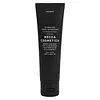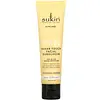What's inside
What's inside
 Key Ingredients
Key Ingredients

 Benefits
Benefits

 Concerns
Concerns

 Ingredients Side-by-side
Ingredients Side-by-side

Octocrylene
UV AbsorberButyl Methoxydibenzoylmethane
UV AbsorberBis-Ethylhexyloxyphenol Methoxyphenyl Triazine
Skin ConditioningPhenylbenzimidazole Sulfonic Acid
UV AbsorberC12-15 Alkyl Benzoate
AntimicrobialCarbomer
Emulsion StabilisingCetearyl Alcohol
EmollientDisodium EDTA
Tocopheryl Acetate
AntioxidantEthylhexylglycerin
Skin ConditioningParfum
MaskingGlycerin
HumectantGlyceryl Stearate
EmollientIodopropynyl Butylcarbamate
PreservativePhenoxyethanol
PreservativePinus Pinaster Callus Powder
Skin ConditioningPonceau Sx
Potassium Cetyl Phosphate
EmulsifyingWater
Skin ConditioningSodium Hydroxide
BufferingSodium PCA
HumectantSorbitan Stearate
EmulsifyingOctocrylene, Butyl Methoxydibenzoylmethane, Bis-Ethylhexyloxyphenol Methoxyphenyl Triazine, Phenylbenzimidazole Sulfonic Acid, C12-15 Alkyl Benzoate, Carbomer, Cetearyl Alcohol, Disodium EDTA, Tocopheryl Acetate, Ethylhexylglycerin, Parfum, Glycerin, Glyceryl Stearate, Iodopropynyl Butylcarbamate, Phenoxyethanol, Pinus Pinaster Callus Powder, Ponceau Sx, Potassium Cetyl Phosphate, Water, Sodium Hydroxide, Sodium PCA, Sorbitan Stearate
Zinc Oxide 21.5%
Cosmetic ColorantWater
Skin ConditioningIsoamyl Laurate
EmollientCaprylic/Capric Triglyceride
MaskingSorbitan Stearate
EmulsifyingCetearyl Alcohol
EmollientHydroxypropyl Starch Phosphate
Phenethyl Alcohol
MaskingCaprylyl Glycol
EmollientGlyceryl Isostearate
EmollientXanthan Gum
EmulsifyingPolyhydroxystearic Acid
EmulsifyingCetearyl Glucoside
EmulsifyingSucrose Cocoate
EmulsifyingRosa Canina Fruit Oil
EmollientCarthamus Tinctorius Seed Oil
MaskingGlycerin
HumectantCucumis Sativus Fruit Extract
EmollientCamellia Sinensis Leaf Extract
AntimicrobialPotassium Sorbate
PreservativeParfum
MaskingZinc Oxide 21.5%, Water, Isoamyl Laurate, Caprylic/Capric Triglyceride, Sorbitan Stearate, Cetearyl Alcohol, Hydroxypropyl Starch Phosphate, Phenethyl Alcohol, Caprylyl Glycol, Glyceryl Isostearate, Xanthan Gum, Polyhydroxystearic Acid, Cetearyl Glucoside, Sucrose Cocoate, Rosa Canina Fruit Oil, Carthamus Tinctorius Seed Oil, Glycerin, Cucumis Sativus Fruit Extract, Camellia Sinensis Leaf Extract, Potassium Sorbate, Parfum
 Reviews
Reviews

Ingredients Explained
These ingredients are found in both products.
Ingredients higher up in an ingredient list are typically present in a larger amount.
Cetearyl alcohol is a mixture of two fatty alcohols: cetyl alcohol and stearyl alcohol. It is mainly used as an emulsifier. Emulsifiers help prevent the separation of oils and products. Due to its composition, it can also be used to thicken a product or help create foam.
Cetearyl alcohol is an emollient. Emollients help soothe and hydrate the skin by trapping moisture.
Studies show Cetearyl alcohol is non-toxic and non-irritating. The FDA allows products labeled "alcohol-free" to have fatty alcohols.
This ingredient is usually derived from plant oils such as palm, vegetable, or coconut oils. There is debate on whether this ingredient will cause acne.
Due to the fatty acid base, this ingredient may not be Malassezia folliculitis safe.
Learn more about Cetearyl AlcoholGlycerin is already naturally found in your skin. It helps moisturize and protect your skin.
A study from 2016 found glycerin to be more effective as a humectant than AHAs and hyaluronic acid.
As a humectant, it helps the skin stay hydrated by pulling moisture to your skin. The low molecular weight of glycerin allows it to pull moisture into the deeper layers of your skin.
Hydrated skin improves your skin barrier; Your skin barrier helps protect against irritants and bacteria.
Glycerin has also been found to have antimicrobial and antiviral properties. Due to these properties, glycerin is often used in wound and burn treatments.
In cosmetics, glycerin is usually derived from plants such as soybean or palm. However, it can also be sourced from animals, such as tallow or animal fat.
This ingredient is organic, colorless, odorless, and non-toxic.
Glycerin is the name for this ingredient in American English. British English uses Glycerol/Glycerine.
Learn more about GlycerinParfum is a catch-all term for an ingredient or more that is used to give a scent to products.
Also called "fragrance", this ingredient can be a blend of hundreds of chemicals or plant oils. This means every product with "fragrance" or "parfum" in the ingredients list is a different mixture.
For instance, Habanolide is a proprietary trade name for a specific aroma chemical. When used as a fragrance ingredient in cosmetics, most aroma chemicals fall under the broad labeling category of “FRAGRANCE” or “PARFUM” according to EU and US regulations.
The term 'parfum' or 'fragrance' is not regulated in many countries. In many cases, it is up to the brand to define this term.
For instance, many brands choose to label themselves as "fragrance-free" because they are not using synthetic fragrances. However, their products may still contain ingredients such as essential oils that are considered a fragrance by INCI standards.
One example is Calendula flower extract. Calendula is an essential oil that still imparts a scent or 'fragrance'.
Depending on the blend, the ingredients in the mixture can cause allergies and sensitivities on the skin. Some ingredients that are known EU allergens include linalool and citronellol.
Parfum can also be used to mask or cover an unpleasant scent.
The bottom line is: not all fragrances/parfum/ingredients are created equally. If you are worried about fragrances, we recommend taking a closer look at an ingredient. And of course, we always recommend speaking with a professional.
Learn more about ParfumSorbitan Stearate comes from sorbitol and stearic acid. Sorbitol is a type of sugar and stearic acid is a fatty acid.
It is used as an emulsifier and helps ingredients stay together by creating water-in-oil emulsions.
This ingredient may not be Malassezia folliculitis, or fungal-acne safe.
Water. It's the most common cosmetic ingredient of all. You'll usually see it at the top of ingredient lists, meaning that it makes up the largest part of the product.
So why is it so popular? Water most often acts as a solvent - this means that it helps dissolve other ingredients into the formulation.
You'll also recognize water as that liquid we all need to stay alive. If you see this, drink a glass of water. Stay hydrated!
Learn more about Water